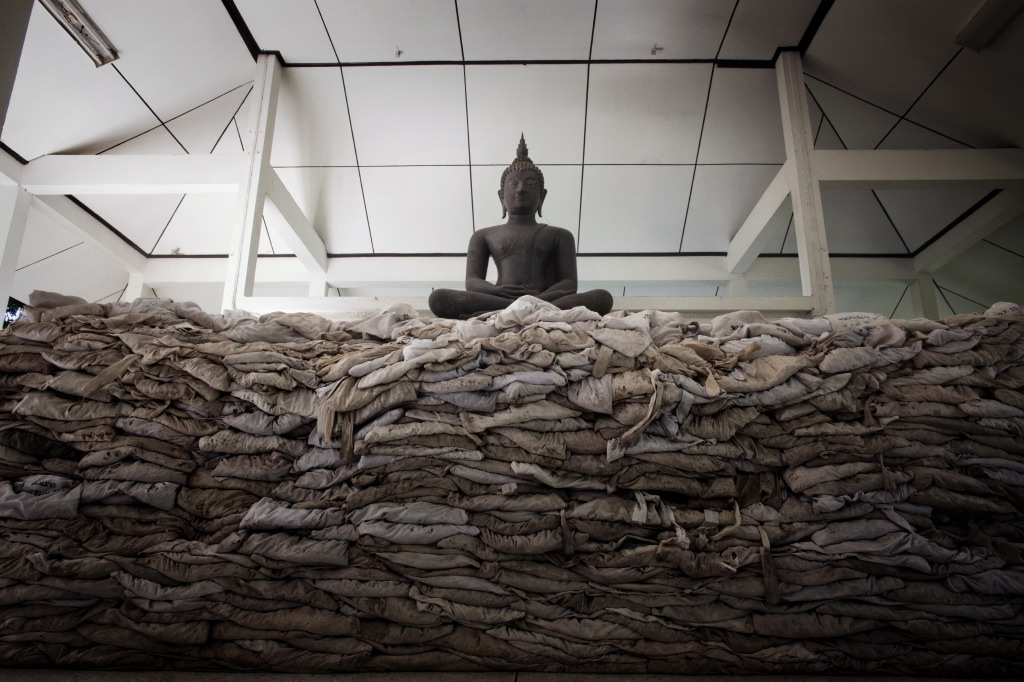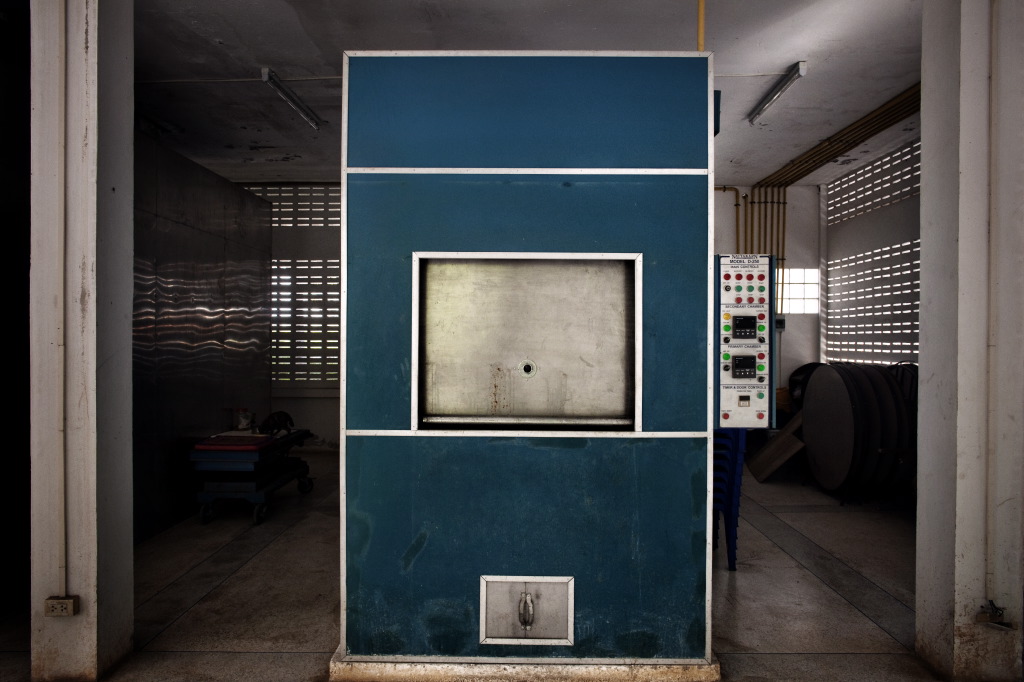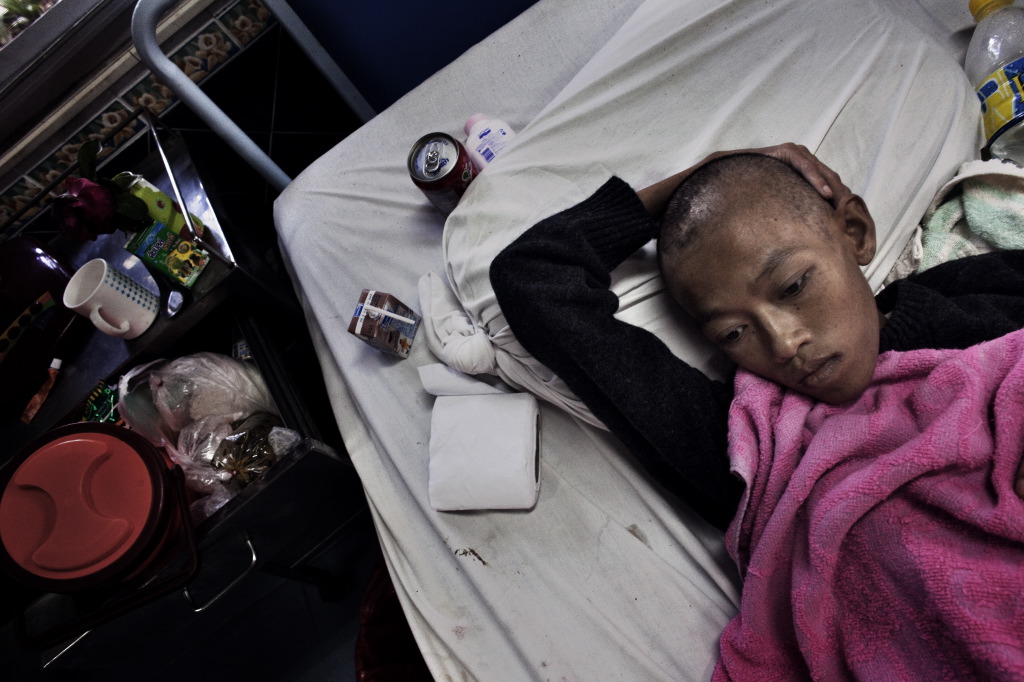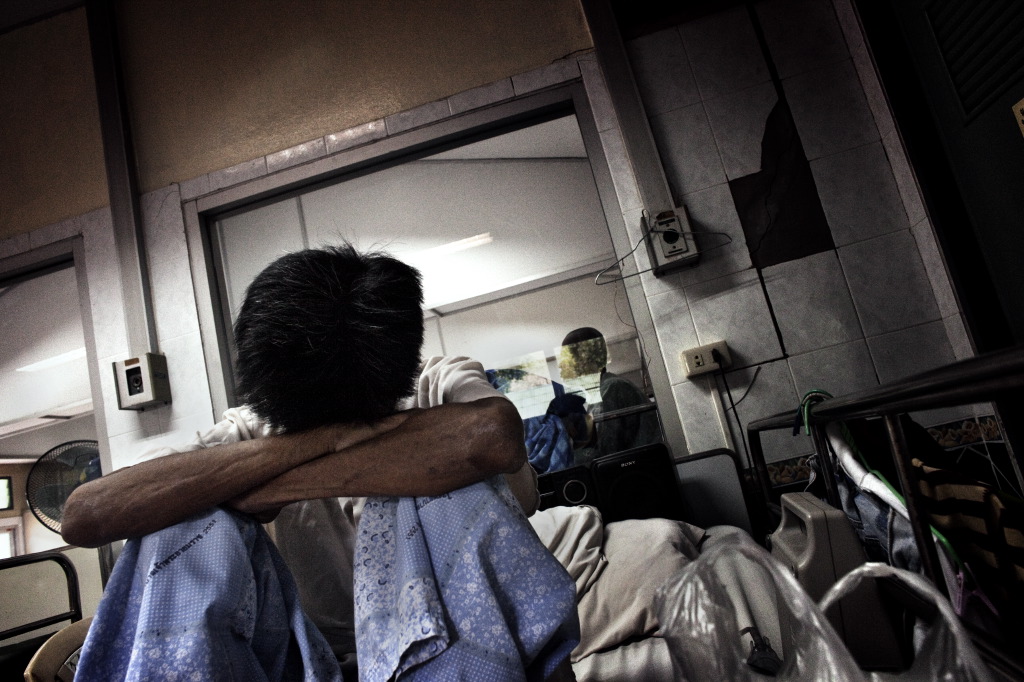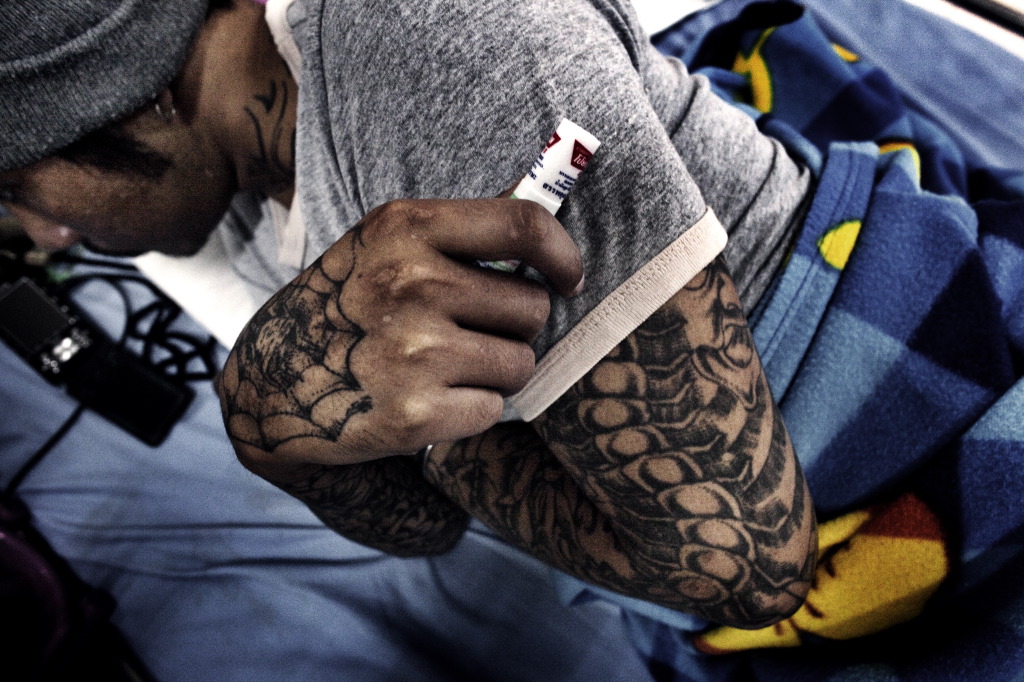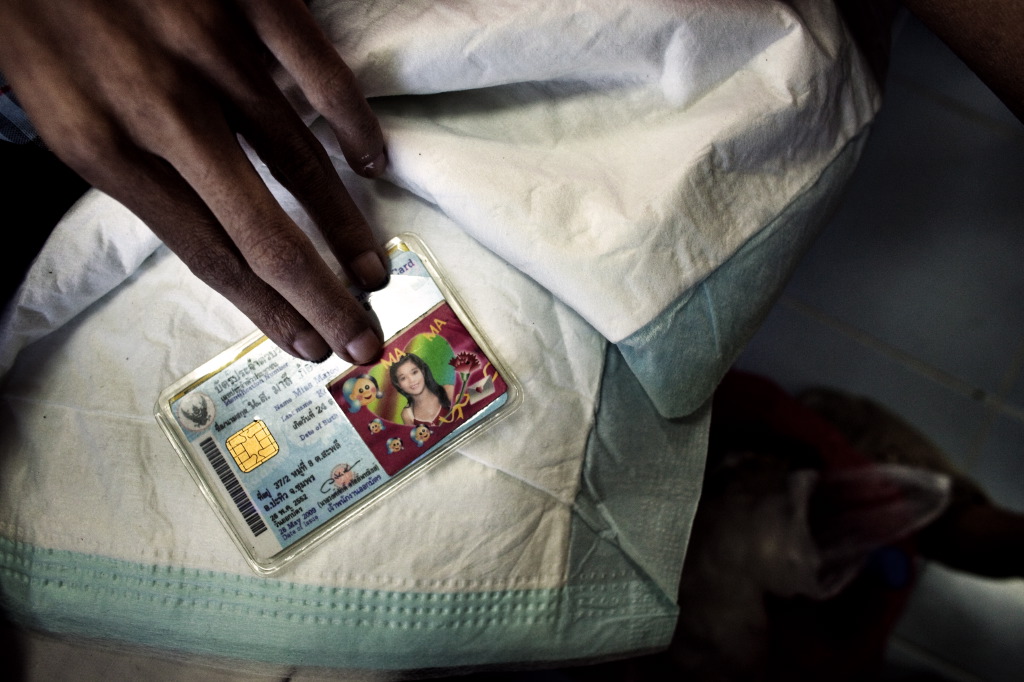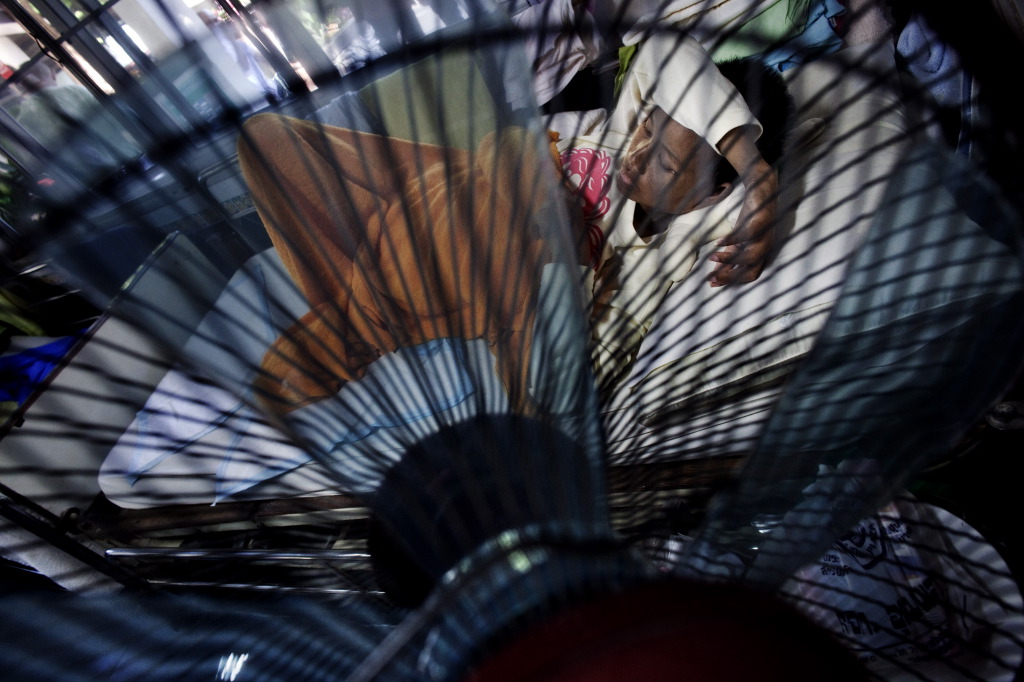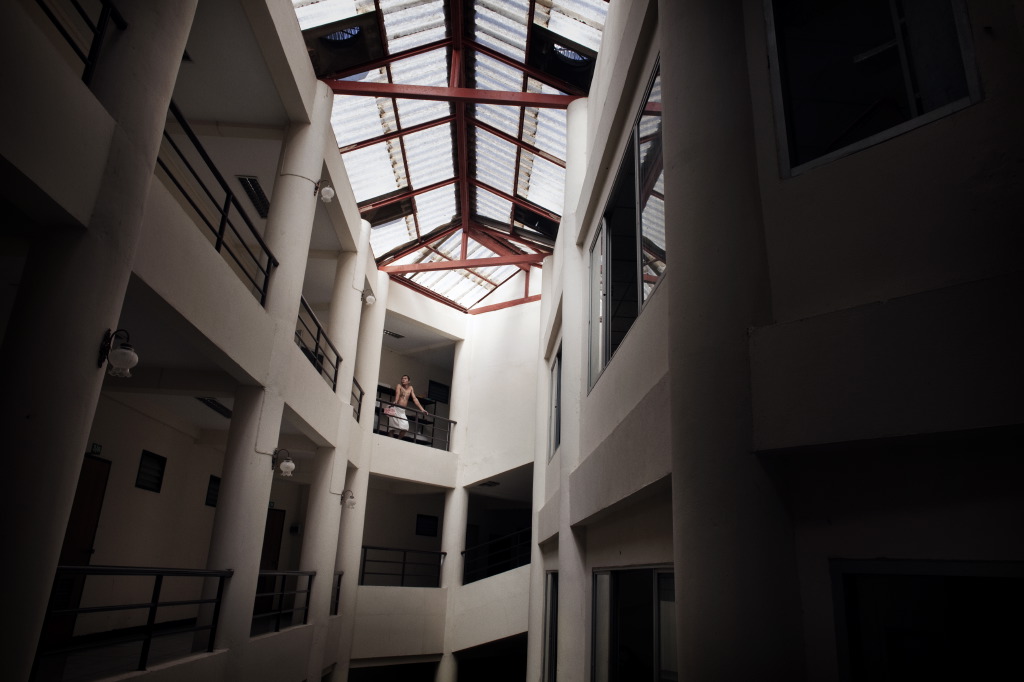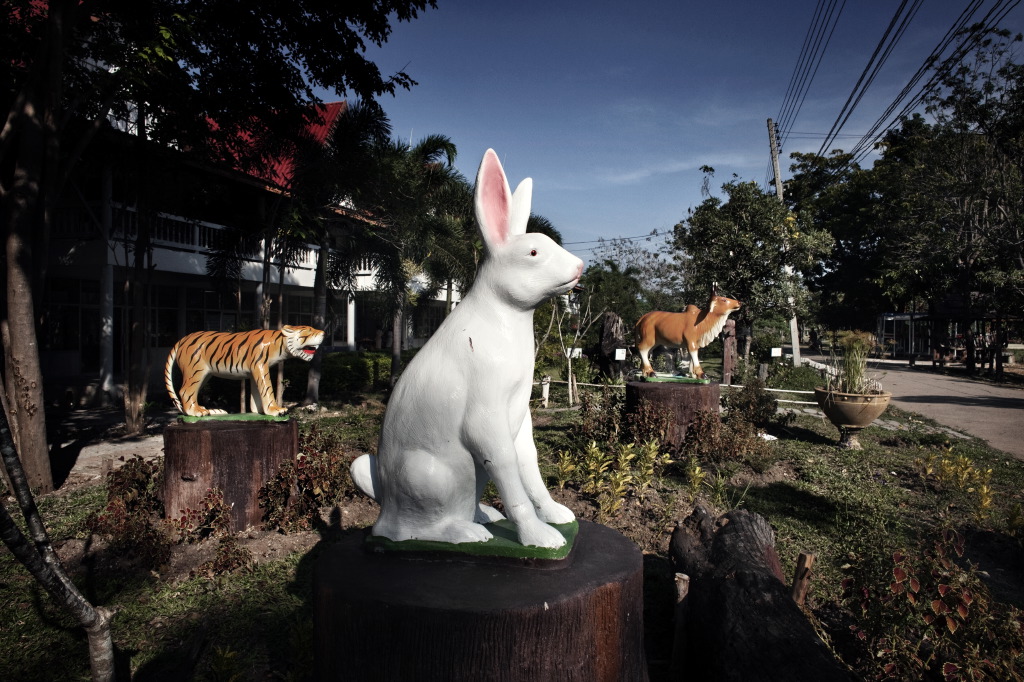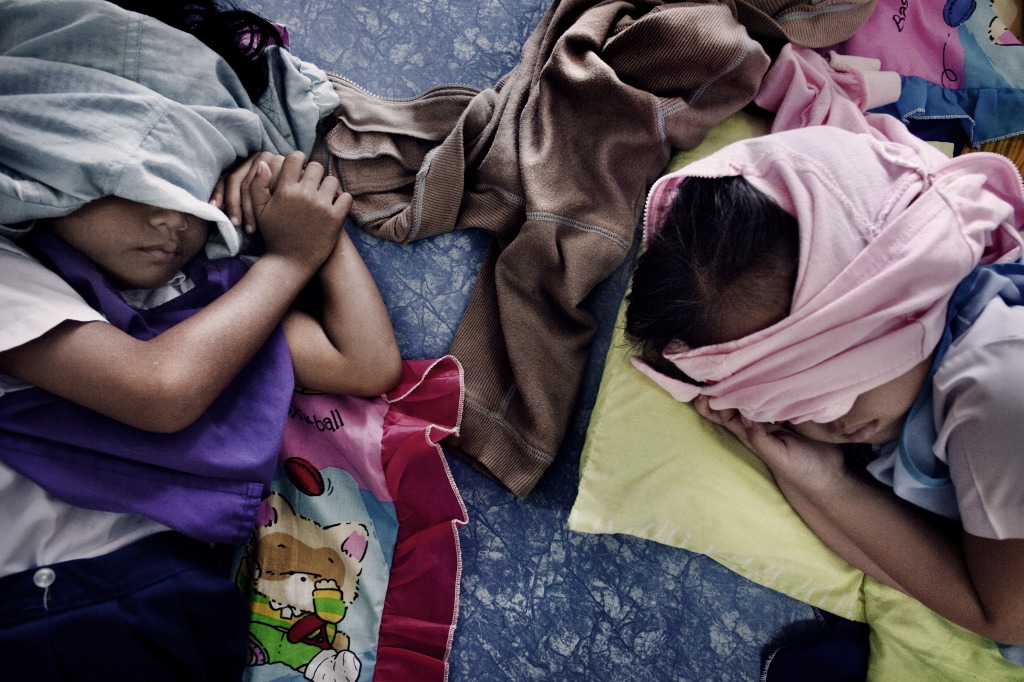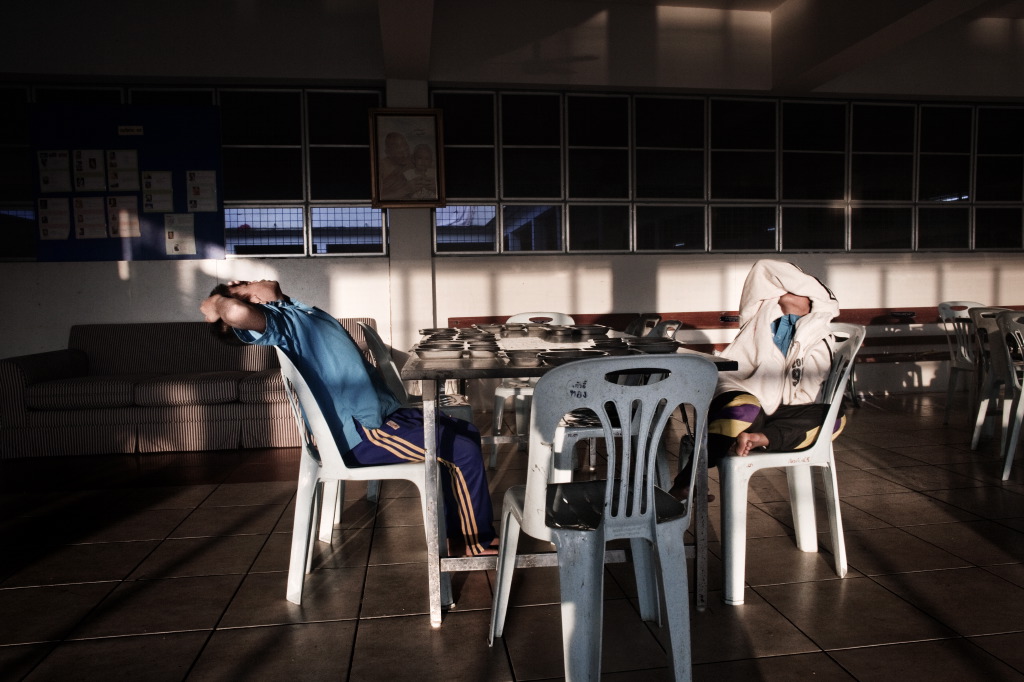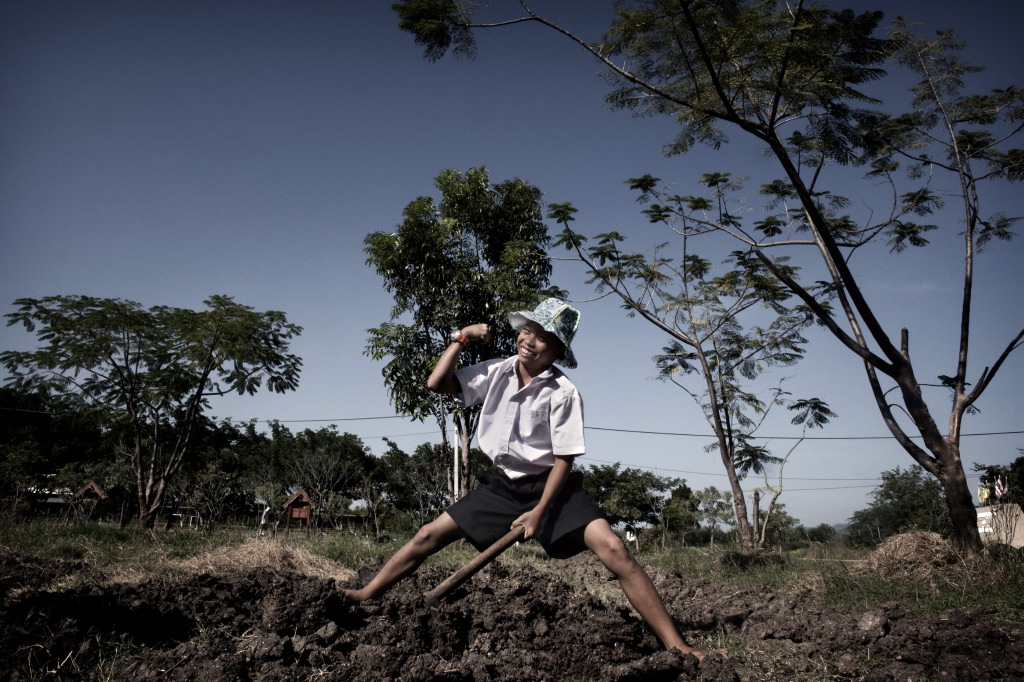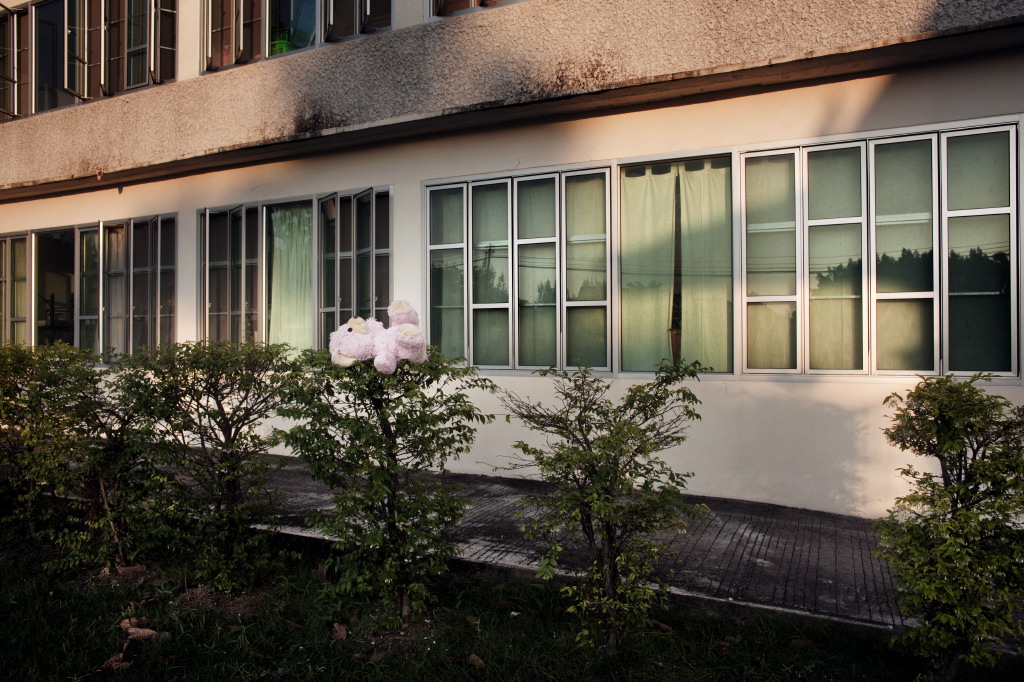X
The temple, which is built at the foot of a small mountain in Lopburi, 150 kilometers north of Bangkok, is home to 550 patients, including 140 children. Its founder is Alongkot Dikkapanyo, a 53-year-old Buddhist monk, who left a promising career in engineering at the ministry of agriculture at the age of 26 to become a monk.. The idea of turning a temple into an AIDS hospice started in 1990 when two young HIV-positive men came to Wat Phra Baht Nam Phu, which means in Thai “the temple of Buddha’s footprints.” Some families left patients at the temple and never saw them again. But many patients came by themselves, even with their children, saying they had no other places to go. Most men got HIV from prostitutes, while many women were infected from their boyfriends and husbands. Around 10 to 15 patients die each month, and the temple, which has its own incinerator, and has cremated more than 10,000 bodies since 1992 . Even after death, most families don’t come to pick up the ashes. Alongkot has put thousands of white cotton bags containing bones and ashes of AIDS patients around a brown Buddha statue at the temple. The temple still has no doctor and receives “very little” money from the Thai Government, depending almost entirely on funds from the Thai Royal family and private donations. (text by Luca Catalano Gonzaga).
